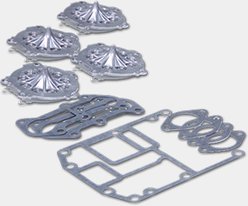“Etiquette” is basically an old-fashioned word for good manners. While one of the many joys of boating is that it lets us go our own way and do our own thing, we still must share the water with other boaters. Treating them with the same courtesy you would expect to receive yourself can make it a more pleasant experience for everybody. In many cases, proper boating etiquette also can help to ensure everyone’s safety on the water.
Here are four basic boating etiquette tips:
Don’t hog the boat ramp
Proper etiquette begins even before you get out on the water. When you enter a boat-launching area, instead of heading straight for the ramp, pull into a parking spot or designated staging area to prep and load the boat with everything you need. Remove the trailer tie-downs and check the battery there. That way, you won’t have to do it on the ramp.
After launching your boat, immediately drive your vehicle and trailer back to the parking area. If possible, leave one person with the boat to drive it out of the way while you park. When you return to the ramp, the boat driver can circle back and pick you up from the dock, along with any passengers you may have. If you are boating solo, after you launch your boat, tie it up far enough down the dock to leave room for another vessel before you park your vehicle. The goal is to minimize your time on the ramp itself, so others don’t have to wait.
Lend a hand in the marina
If you are on the dock in a marina and you see a boat approaching, unless a member of the marina staff is on hand to catch their lines, go over and offer to help tie up the boat. Some skippers have a procedure for docking and won’t want you to interfere, but most will be very grateful for the assistance.
Slow down for slower boats
Even if you are following the posted speed limit on a waterway, your wake can affect a boat that’s slower than yours, or one that is idling or anchored nearby. Sailboats generally fall into this category, as do small fishing boats and kayaks. At best, your wake may rock the other boat. At worst, it could cause a person who is standing up in the boat to fall over or go overboard. The best policy is to slow down to just a few knots faster than the slower boat is going and pass it with as little wake as possible.
Don’t chat on Channel 16
Channel 16 is the distress, safety and hailing channel on your VHF radio. It is monitored by the U.S. Coast Guard, listening for emergency calls. Whenever possible, keep it free of chatter. That’s not the channel to use to let your buddy know you just caught a big fish. While it’s appropriate to use Channel 16 to hail a marina you are approaching, once the marina responds and gives you its working VHF channel, immediately switch to that channel. If you have fixed bridges in your area that you need to hail for openings, learn their working VHF channel numbers so you don’t have to use Channel 16. Each time you use the radio, end your transmission with “Over,” to let the other party know you have finished speaking. It may sound old-fashioned, but it’s the correct protocol.
Follow these tips and treat other boaters with respect, and you can help everyone to enjoy a happy, stress-free day on the water.


















